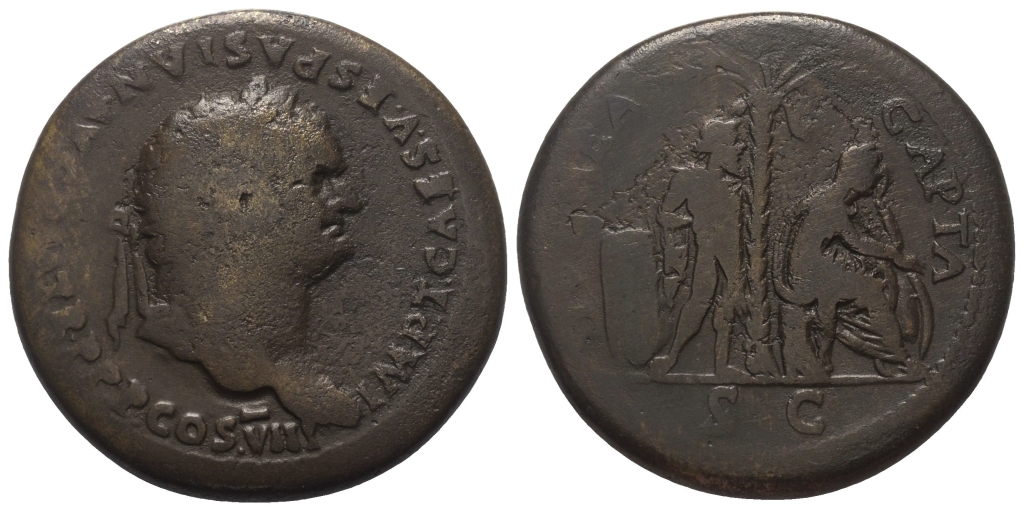Sometimes the coins come with a little mystery …

Titus
Æ Sestertius, 23.26g
Rome mint, 80 AD
Obv: IMP T CAES VESPASIAN AVG P M TR P P P COS VIII; Head of Titus, laureate, bearded, r.
Rev: IVDAEA CAPTA; S C in exergue; Palm tree; to l., Captive stg. r.; to r., Judaea std. r.
RIC 133 (R2). BMC -. BNC -. Hendin 1589.
Acquired from Solidus, March 2023. Ex Solidus Auction 108, 8 November 2022, lot 299.
An extremely rare Judaea Capta commemorative sestertius struck for Titus in early 80, possibly to coincide with the opening of the massive Flavian Amphitheater. A recently discovered dedicatory inscription of the building states “The Emperor Titus Caesar Vespasian Augustus Commanded the New Amphitheater to be Built from the Spoils of War.” Combined with the original decoration scheme of palm trees, shields, and captives it is compelling evidence that Titus’s ‘Judaea Capta’ coins were issued during the structure’s inaugural games in the late spring or early summer of 80. The reverse copies a similar Judaea Capta type struck for Vespasian in 71, possibly serving as a ‘stop-gap’ issue until new reverse designs were prepared for Titus (RIC, p.184). The coin features a couple of differences from the more common ‘IVD CAP’ sestertii struck later in the same year: the obverse legend is counter clockwise with ‘VESPASIAN’ fully spelled out, and the reverse fully spells ‘IVDAEA CAPTA’ with some minor differences in the design (figures are reversed around the palm, shield instead of plough near standing captive). RIC places this coin as a Rome mint issue struck in early 80 alongside two other types – Mars and Pax, based on the ‘Rome mint’ style of the portraits, all of which share the same obverse die. Curtis Clay has proposed (Gemini IX, lot 448) a Thracian origin for the issue because of the flat fabric of the flans (a trademark of the Thracian mint), many of the specimens came to market after the fall of the Iron Curtain, and the reverse designs match those struck later at the Thracian mint. He further argues the ‘Rome mint’ style can be explained by Roman die engravers being transferred to Thrace. The style indeed mirrors contemporary Rome mint denarii, which can only be a result of the same engravers working on both issues. Despite the flat fabric of the flans, the style does not match up to the later Thracian issues (heavily seriffed letters, large portraits), and the circulation pattern appears to be similar with the Rome mint issues. For the time being I’ll attribute Group 1 and 1A to Rome until further evidence comes to light.
